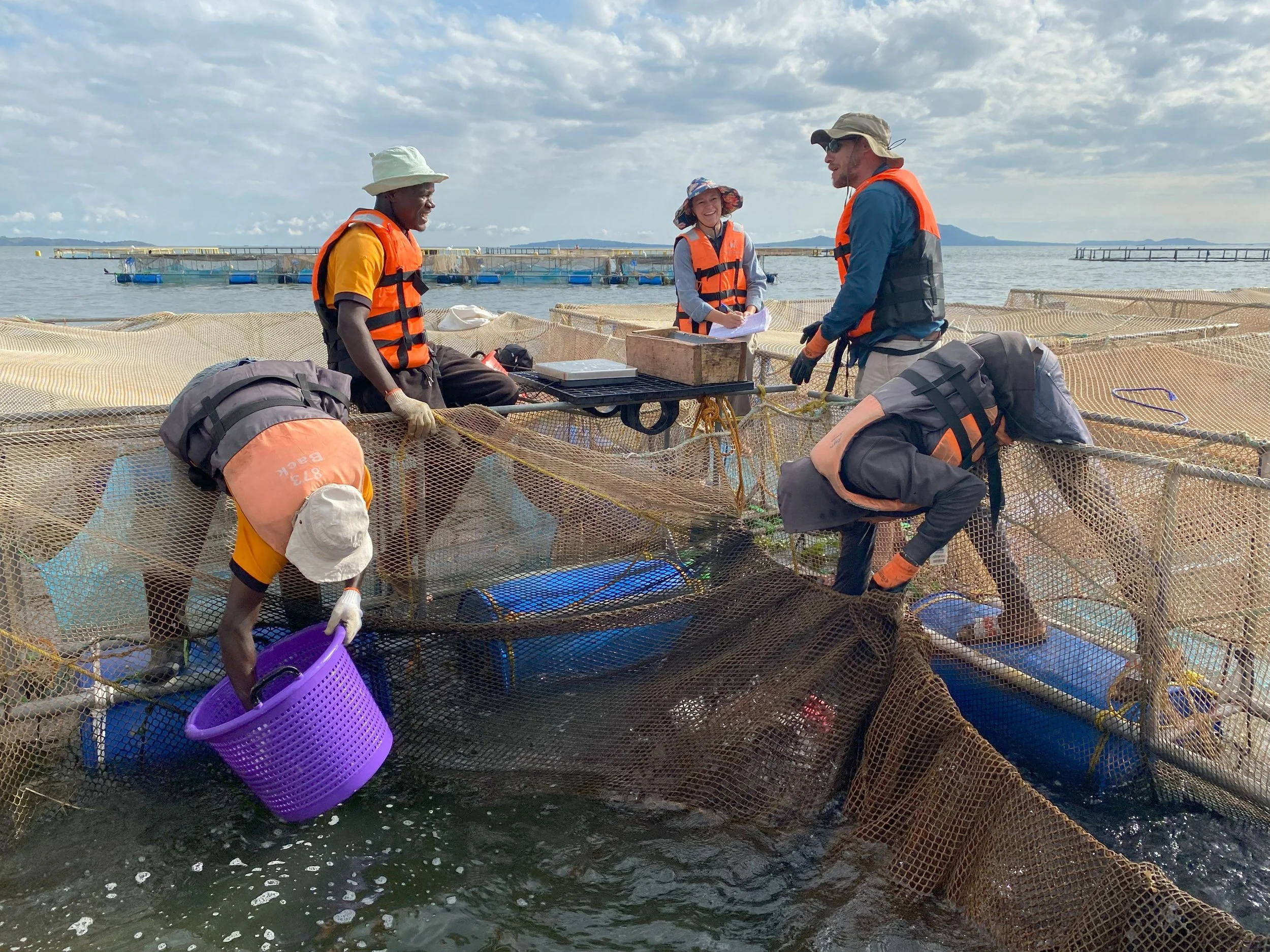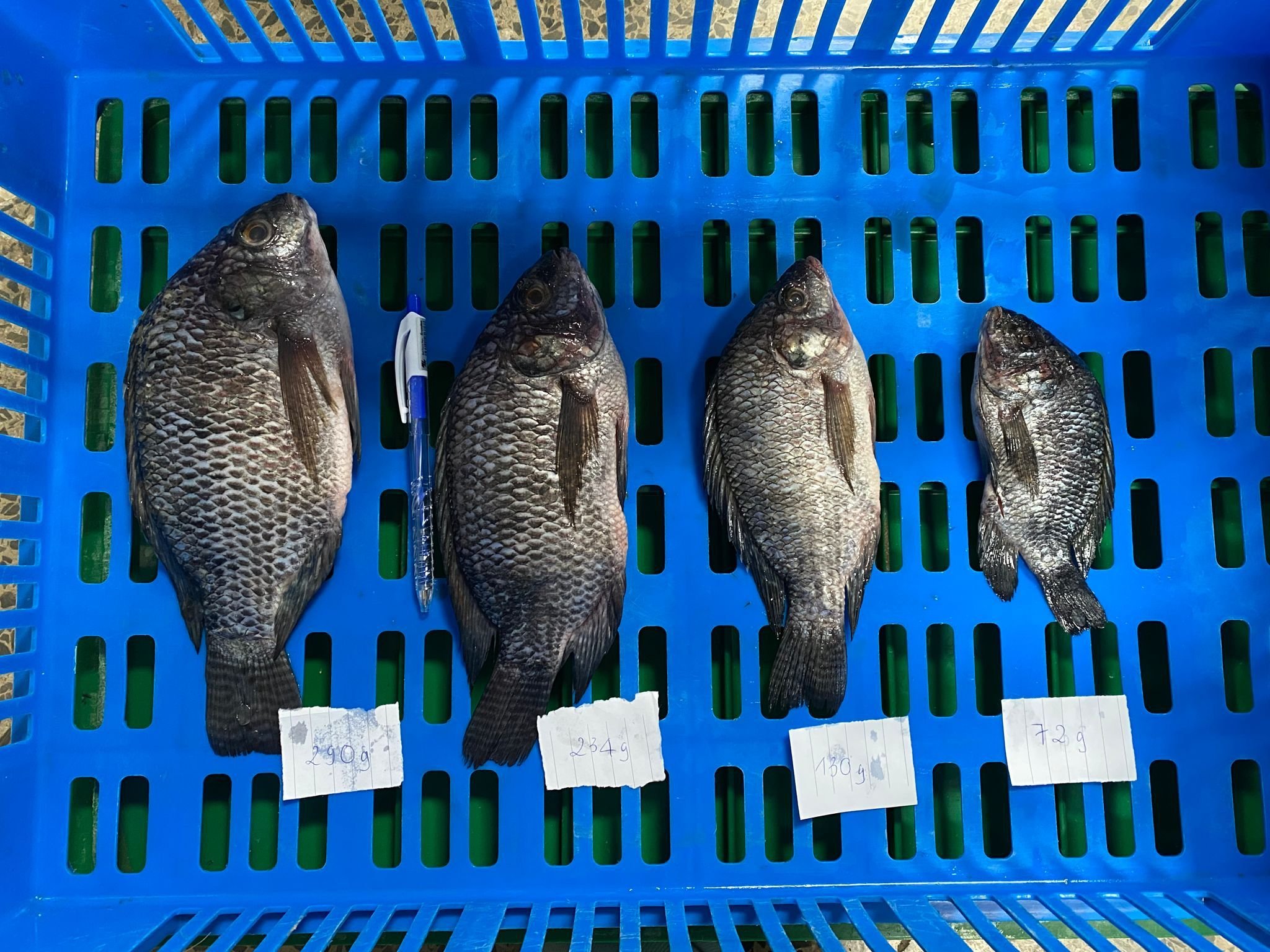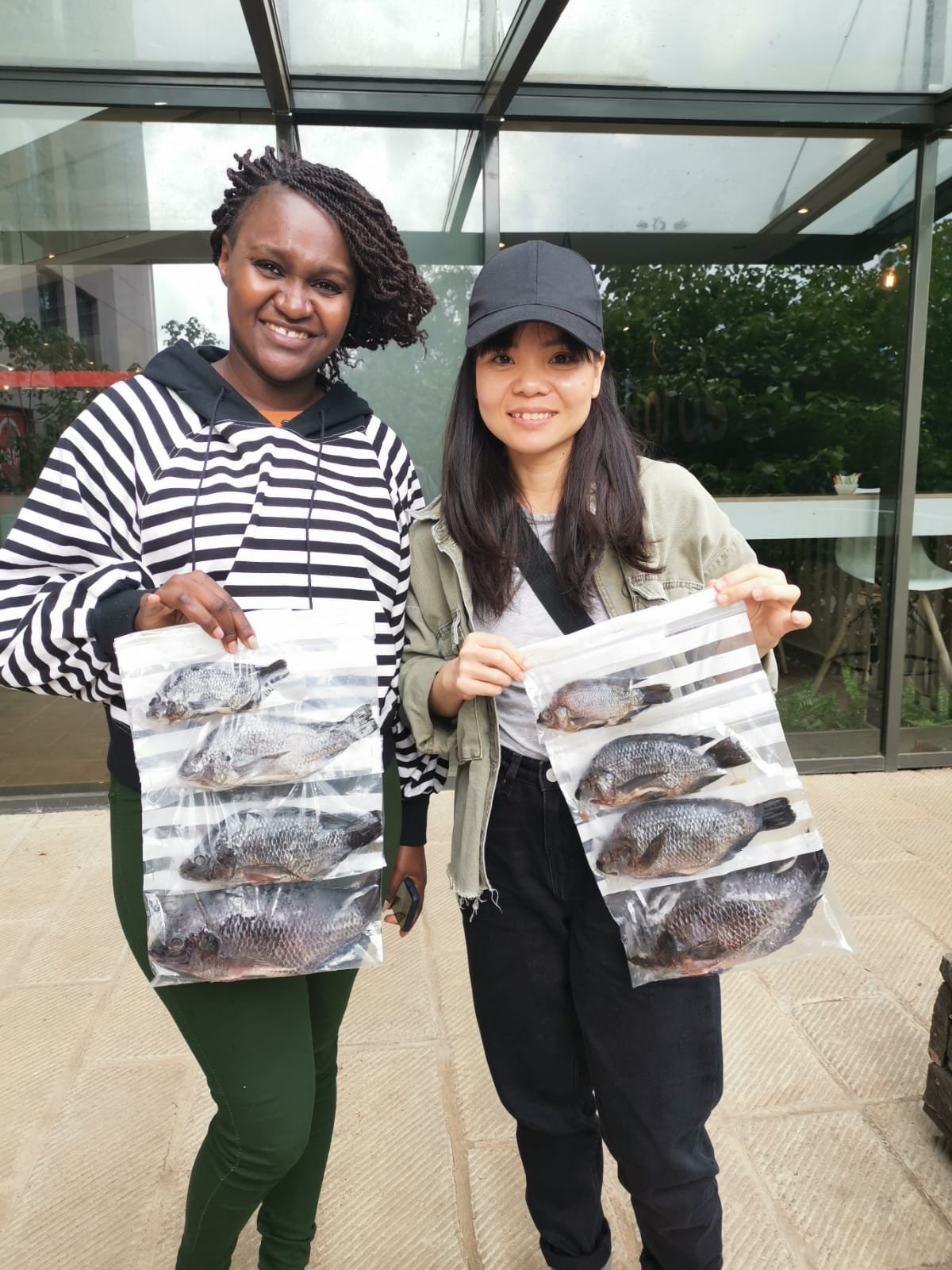Growing smaller fish for inclusive markets? Increasing stocking density and shortening the production cycle of Nile tilapia in cages on Lake Victoria
We asked Dr Olek Kaminski about his recent publication “Growing smaller fish for inclusive markets? Increasing stocking density and shortening the production cycle of Nile tilapia in cages on Lake Victoria” and the work on which it was based. Here are his replies:
What prompted the research? What issues does it address?
In aquaculture, the thinking generally goes that the bigger the fish the better (i.e., bigger fish are sold for more money!). Thus, commercial tilapia farmers primarily focus on maximizing fish weight for sale in urban centres in Africa. However, the higher price points of larger fish cater mainly to wealthier consumers, leaving smaller, domestically produced tilapia underserved, especially among lower-income groups. Meanwhile, many farmers in Africa struggle to grow their fish to a large size because it requires more feed, time and money. The competitive advantage in Africa however, is that many Africans actually prefer or are limited to purchasing smaller fish because they are cheaper. Additionally, these smaller fish are generally more nutritious (and for some people even tastier). Recognizing this gap, there's an opportunity for small-to-medium-sized farmers to supply smaller tilapia, aligning with local preferences and nutritional needs. An experiment with tilapia in cages on Lake Victoria assessed the feasibility of producing smaller tilapia through shortened production cycles, increased stocking density, and partial harvesting, i.e., producing fish for a shorter time, stocking more fish per cubic metre, and taking out a portion of the smaller fish halfway through the growing cycle.
What did the research find?
Increasing stocking density and shortening the production cycle had few effects on biological indicators. In other words, it did not affect mortality or growth of fish and partial harvesting actually had a significantly better feed-conversion-ratio (less feed needed to grow fish per kg). While partial harvests resulted in slightly lower profits than a traditional model, a significant cash inflow half-way through the cycle would help cash-poor farmers cover input expenses throughout the cycle. The effects on financial indicators were complex and require contextualisation to the Kenyan aquaculture sector. In general, the results of the trial suggest that purposively growing small tilapia over a shorter growth cycle is technically and financially feasible albeit at slightly lower gross margins compared to growing larger fish. The costs used in the assessment, however, are highly variable and context-dependent, as are the situations of a vast array of different SME farmers. The overall efficiency and profitability will depend greatly on a cage operator’s target market and ability to source fingerlings (seed) at a reasonable price. The objectives of each famer vary (e.g., higher margins, greater market options or more even cash flows), and some manoeuvrability in production systems is needed.
Why is it significant?
The ability for producers to make quicker, albeit lower returns in shorter time periods when growing smaller fish means that cash flow is more manageable, especially if farmers are buying feed and seed on credit. Cash flow is most challenging towards the end of the cycle when large fish exponentially increase operational feed cost – coupled with poor access to investment, the economic feasibility of cage farming for SME farmers may be limited by the long production period until sales produce a cash influx. A mid-cycle cash influx would support the higher costs of feeding larger fish. While profit may be maximised with the production of larger fish, this may not be feasible for farmers with cash flow challenges. This is important when considering that some producers may be operating in economic conditions characterised by volatile exchange and interest rates and where environmental conditions may provide additional uncertainties and challenges.
Who will benefit from the research and how?
Targeting lower-income consumers with small fish would mark a significant shift for aquaculture in the region by accommodating the bottom-of-the-economic-pyramid. Furthermore, when eating smaller fish, generally more of the fish is consumed compared to fillets consumed on larger fish, which may result in better health and nutrition outcomes as people consume parts that are richer in micronutrients. Globally, small fish plays a crucial role in impoverished people’s diet. The production methods presented in this study can be described as a nutrition-sensitive approach to aquaculture as it actively seeks to accommodate and maximise the nutrient requirements of the most vulnerable people in society. It allows those who were previously disadvantaged more opportunities to access the value chain and increase their intake of a valuable animal-source protein.
How was the research carried out?
The experiment took place at the largest fish farm in Kenya – Victory Farms. The company gave UoS researchers access to 18 cages where the trial was run. Olek Kaminski and Alex Pounds worked together to devise and run the trial under supervision from Prof Dave Little. The trial took place over 140 days between Feb and June in 2022 with Alex managing the trial over this period and Olek providing the analytics. The feed was sponsored by Tunga Nutrition in partnership with Skretting and Nutreco, who also sponsored the travel and operations of the UoS researchers.
What other outputs were there from the research?
The research team also carried out a consumer survey in urban and rural areas in Kenya with over 700 people. Tien Nguyen, an MSc student from the Institute of Aquaculture supported Olek on this part of the project as part of her thesis. In short, the study found that close to 20% of people preferred smaller fish and that the probability of selecting smaller fish was directly correlated with lower wealth. The research also partnered with KTN Agri-food Africa to build on the trial and see whether fish could be grown without sex-reversed hormones (i.e., mixed-sex systems). Alongside the field research we developed a spreadsheet model which is designed to help farmers and extension workers consider different production strategies for tilapia produced using cages in tropical lakes, e.g., strategies that include producing a greater proportion of smaller fish for price sensitive consumers. It can also be used as an educational tool to help focus on different aspects of cage farm management. See this web page for further information and download links: https://www.susaquastirling.net/smalltilapia
Who would you like to acknowledge for their contribution to the work?
We would like to thank Skretting, Tunga Nutrition, Victory Farms and Innovate UK KTN for financial and practical support.







